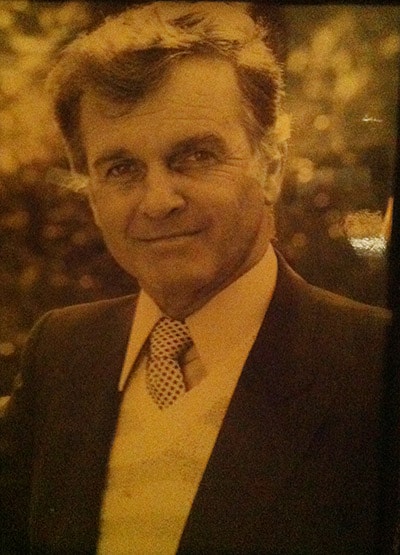 Here’s another sneak peek into the inside of The Tapping Solution book, a New York Times Bestseller and Amazon #1 Bestseller for Stress Management. Here’s a short section from Chapter 7 that you might enjoy. 🙂
Here’s another sneak peek into the inside of The Tapping Solution book, a New York Times Bestseller and Amazon #1 Bestseller for Stress Management. Here’s a short section from Chapter 7 that you might enjoy. 🙂
“But Patricia’s pain isn’t some psychological issue! It says here that she fractured her L1 vertebra. She has rods and bolts in her back! How could tapping possibly help?”
We were sitting around a table in July of 2007, reviewing applications for the documentary retreat. We had a stack of paper in front of us—people desperate for anything to help them relieve pain, lose weight, overcome grief, and much more.
Patricia, whose application Jessica was reading, had been in a terrible boating accident where she shattered her L1, one of the large lumbar vertebrae of the lower back. Surgeons had succeeded in stabilizing her back with four titanium rods and eight sets of screws and bolts. But the remaining pain was excruciating. She was taking morphine, Percocet, Norco, and Valium.
Page 95
She had trouble sleeping, so on top of everything else, she took Ambien to get a good night’s rest. Even with all the meds, she was regularly in pain and stressed out about her difficult situation.
The argument I was having with my sister was whether EFT would work on the pain that had a clear physical cause. It was her understanding at the time that Emotional Freedom Techniques were most effective for psychological or psychosomatic pain issues—stemming from repressed emotions—but I knew there was more to the story than that. Using my project-manager/big-brother veto, I overruled Jessica’s protestations and accepted Patricia into the four-day event.
She showed up for the weekend in considerable pain, after riding in the car for six hours. It was evident that as much as she was trying to keep her spirits up—she was naturally a determined and positive person—the pain was simply wearing her down. She had shared with us on her application that “it still feels like I’m living a bad dream that I’ll wake up out of. . . . Everything has been modified . . . and I’m still adapting, adjusting, and trying to find the right balance.” She went on to say, “I hate that I always have to ask, How will this activity/event/decision affect my back? I’m much slower than I used to be, and that’s frustrating. I’m afraid that people may perceive me as being handicapped. The accident has totally redefined my life, and I resent that but try to focus on the positive.”
Tap on the Diagnosis
EFT expert Rick Wilkes, who was one of the facilitators at the Tapping Solution event, spent the weekend working with Patricia to relieve her pain and help her move forward in life.
One of the first things he addressed was everything the doctors had told her about her back—about what was possible and not possible. The diagnosis and prognosis, especially since we are often most vulnerable at the time we hear them, can have devastating effects on our bodies and our futures. When we hear “you’ll always have pain” or “you’ll never be active again,” the body internalizes that limiting belief on a subconscious level. On the conscious level, we often operate as if it’s the truth as well.
Patricia loved doing yoga before the accident and was told she would “never do yoga again.” Emotionally, this devastated her—sending negative chemicals coursing through the body, and it limited what she thought was possible. Perhaps if she had never been told that, she might have attempted to do yoga—slowly stretching, opening up, and healing. But her doctors’ pronouncement ended that possibility in her mind.
Page 96
Until she tapped, that is! Rick expertly guided her back through everything the doctors had said to her and how she felt about it. They systematically tapped to clear the negative emotions she felt and to address the subconscious messages her body was storing.
This tapping, along with other approaches we’ll cover in the rest of the chapter, had incredible results. By the end of the weekend, Patricia felt no pain in her back. The constant heaviness from the rods and screws was gone. And, perhaps most important, she felt hopeful for the future and excited about what was possible for her— she was no longer focused on everything she couldn’t do! After the event, she got off all pain and sleeping medications and started doing yoga again. An incredible result!
Try It Yourself: Tapping on the Diagnosis
When you think about any pain you might be experiencing, ask yourself,
What do I know to be true about this pain?
What have my doctors told me is going on with my body?
What did I read online about what’s going on with my body?
What do I believe to be true about my condition?
Take a few minutes and answer these questions, preferably on paper, in as much detail as possible. We’ll use this list as the basis to begin tapping. Your list might look like this:
• I have a slipped disc in my back. (Feel free to get as specific as possible—i.e., I have a slipped disc in my third vertebra that is degenerating and now causes a throbbing, red pain.)
• The doctors told me it would always hurt.
• The doctors told me eventually it will need surgery.
• The doctors told me it is degenerating and will likely get worse.
• The only way the pain goes away is if I take pain medication.
• I believe I’ll have this pain forever and it will only get worse.
Go back through every item on your list, and give it a number on a 0-to-10 scale, noting how true it feels to you. If you absolutely, positively know you have a slipped disc in your back and that’s the truth, give it a 10.
Page 97
If you fully believe it will always hurt, give it a 10. If part of you doesn’t believe that, it might be a 7 or 8. Now take a moment and rate the overall pain you’re feeling. Give it a number on the 0-to-10 scale.
We’re going to take these statements and, the first time through, combine them into one tapping round.

Karate Chop: Even though I have a slipped disc in my back, I deeply and completely accept myself. (Repeat three times.)
And now moving through the points:
Eyebrow: This slipped disc . . .
Side of Eye: This slipped disc in my back . . .
Under Eye: It’s throbbing and painful . . .
Under Nose: The doctors told me I have a slipped disc . . .
Chin: The doctors told me it would always hurt . . .
Collarbone: The doctors told me it would eventually need surgery . . .
Under Arm: The doctors told me it would likely get worse . . .
Top of Head: The only way the pain goes away is if I take pain medication . . .
Eyebrow: I believe I’ll have this forever and it will only get worse . . .
Side of Eye: This slipped disc in my back . . .
Under Eye: This painful slipped disc . . .
Under Nose: This throbbing, red-hot pain . . .
Chin: I believe it will only get worse . . .
Collarbone: I believe what the doctors told me about my back . . .
Under Arm: The only way the pain goes away is if I take pain medication . . .
Top of Head: This painful slipped disc.
Take a deep breath . . . and let it go.
visit www.thetappingsolution.com/tap5.
Page 98
Remember, this language is just an example for you to see what tapping a diagnosis can look and sound like. The key is for you to come up with your own language, to speak your truth, and to follow your intuition on the issue.
So now, as always, we’re looking for two things:
1. Where are the numbers now—how did the pain shift?
2. What came up?
Check in on your original pain number. Has it gone up? Down? Has the pain shifted? Has it moved in the body? Write down your new number.
Then go back through the original statements and see how those numbers have shifted. Do you still believe you’ll be in pain forever? If you believe it a little less, if a glimmer of hope has appeared, write down the new number. Do you still believe everything your doctors told you to be true?
Then ask yourself, “What came up for me during that tapping?” Did you find yourself getting very emotional when you said, “The doctors told me it would eventually need surgery”? That’s a clue that there’s more there to be tapped on. What phrase stuck out the most? What new thoughts/ideas/emotions came up? Write those down and then use them as the basis for the next round.
You can tap again on all the same statements, going through them until they all clear and feel good, or you can shift to new statements—whatever is most present for you.
What you’ll find as you tap on the current situation and diagnosis is that you free yourself from the shackles of what others told you and what you believe about your pain. As we saw with Patricia, this release can have nearly miraculous effects. As hard as it is for a little sister to admit, Jessica has since acknowledged that I was right about accepting Patricia into the event.
“I didn’t believe Patricia could get rid of her pain,” she says. “But now I know how much our beliefs affect our pain levels. And that the body is miraculous in its ability to heal when we get out of the way!”
When We Become Our Pain
Patricia’s story still amazes me. Even though I had hoped her pain would improve by coming to the event, a part of me, just like Jessica, doubted we could help her, since she had such a physical, tangible issue.
Often we hold on so tightly to the “truth” of physical pain and dis-ease—to what we know about it, to what others have told us about it—that it becomes part of our identity, part of who we are. We are no longer ourselves, we are no longer our hopes, dreams, goals, and desires. Instead we become the pain. We become the diagnosis; we are ruled by everything that’s wrong with us as opposed to everything that’s right with us.
The medical system, as well-intentioned as it is, doesn’t help in this sense. The Western medical industry is constantly looking for and reminding us about what’s wrong with the body—the “likely” future negative scenarios—as opposed to what’s right with the body. Can you imagine a doctor saying to you, “My diagnosis, from a purely medical perspective, based on the X-rays I see, is that you have a slipped disc in your back. That being said, I do want you to know that I’ve seen many X-rays with slipped discs where there was no pain. I’ve also seen slipped discs that healed on their own. Remember, the body has an innate ability to heal, and I have faith that you can move beyond this. Tell me a little more about the things in life that you’re excited about. What might your future look like once this pain goes away?”
What would that attitude, approach, and messaging do toward healing the body, toward providing people with hope and possibility, and toward giving us the native energy we need to move forward? Doctors in their white coats have incredible authoritative power. What they say is often taken in directly by the conscious and subconscious minds and can go on to rule our reality.
So until the medical industry changes its tune, use EFT to tap through any and all limiting beliefs about your body and its ability to heal.











Connect With Us on Social Media